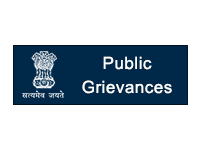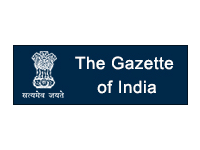The cloud microphysical and dynamical processes in monsoon clouds and the role of aerosols in modifying these cloud characteristics in both direct effect through the scattering and absorption of radiation and indirect effect by modifying the cloud macrophysical, microphysical and rainfall processes are least understood. Cloud processes introduce subgrid scale processes that need to be parameterized. Various types of observations such as in situ and remote sensing observations of clouds and their associated interactions with the environment are invaluable in designing parameterization schemes or improving the representation of processes in the numerical models. Meanwhile, the aerosol and cloud processes are closely linked with the atmospheric dynamics at various scales. The convective mixing between the lower and middle troposphere explains the major contributions to the variance in the climate sensitivity in several climate models.
The controls on the cloud formation, organization, decay in the monsoon convection is a multiscale problem and needs multi faceted approach from the satellite, ground based, in situ airborne observational efforts and laboratory and numerical studies to understand the multiscale physics and dynamics of clouds.
PDTC scientific objectives are in collecting valuable observations under Cloud Aerosol Interaction and Precipitation Enhancement Experiment (CAIPEEX) in campaign mode airborne and integrated ground based observations and for extended period of time at High Altitude Cloud Physics Laboratory (HACPL). These coordinated integrated observations are designed to address direct and indirect effect of aerosols on weather and climate, the impact of aerosols on the hydrological cycle, investigating cloud micro scale and macro scale characteristics, thermodynamic state of the atmosphere and numerical simulations
a). Objectives:
- To conduct airborne observations of aerosol and cloud microphysics under CAIPEEX together with collocated ground based observations of detailed aerosol, CCN, and cloud microphysics, dynamics, and aerosol, gaseous and precipitation chemistry.
- Impact of aerosol and pollution levels on the microphysics and dynamics of naturally forming clouds to effectively design the cloud seeding experiment.
- Increase the understanding and quantification of ‘indirect effect’ of aerosol on climate.
- To make long term and campaign mode observations of Black Carbon, OC/EC, and radiation observations, radiative forcing at different locations and investigate the direct effect of aerosols.
- Conduct rain and aerosol chemistry measurements on campaign mode at different locations in the Ganga Basin and in the neighborhood of Delhi.
- Conduct radiation, aerosol physical, chemical, measurements at HACPL and address CCN activation, droplet and raindrop characteristics Cloud droplet closure and hygroscopicity closure for incorporating aerosol effects on cloud formation and improve the convection and cloud microphysical schemes, in weather and climate models.
- Generate in situ datasets for the validation and development of retrieval algorithms for satellite products over Indian region.
- To monitor clouds continuously for study of cloud microphysics and interaction between clouds and aerosol and the process of precipitation and related dynamics.
- To study formation, growth and evolution of clouds and its interaction with the environment, using dual polarized radar at X-band and Ka-band radars.
- Investigate the role of orography on the precipitation formation and related precipitation microphysics and dynamics and the marine to continental cloud transition, onshore, offshore convection over the Western Ghats.
- Development of observational facilities for thunderstorm monitoring and conducting mission- oriented experiments in different parts of India to understand the dynamical, thermo-dynamical structure, storm electrification, triggering mechanisms and rain formation processes in thunderstorms.
- Conduct measurements of microphysical and electrical variables on aircraft and balloon and simultaneous observations from dual – polarized Doppler Radar and lightning location network.
- Conduct observations of land surface fluxes and boundary layer processes
- Conduct laboratory studies focusing on the understanding of water drops under electric field and impact of pollution on drop evaporation or breakup characteristics.
- Establish a Fluid Dynamical Laboratory to study the laboratory analogue of convection and boundary layers.
- Explore the use of Unmanned Aerial Vehicle (UAV) based observations of aerosol, radiation and boundary layer turbulence.
- Conduct cloud hydrodynamic simulations to capture microscale to mesoscale aspects of the multiscale physics and dynamics of clouds using the approaches such as direct numerical simulation, Large Eddy Simulation and the cloud resolving mesoscale model simulations.
b). Participating Institutions:
- India Meteorology Department (IMD)
- National Center for Medium Range Weather Forecasting, (NCMRWF) New Delhi Indian Institute of Science (IISC), Bangalore
- National Atmospheric Research Laboratory (NARL), Gadanki
- Tata Institute of Fundamental Research (TIFR) Hyderabad
- Space Physics Laboratory (SPL), Vikram Sarabhai Space Center, Trivandrum
- Physics Department, University of Pune, Pune
c). Implementation Plan:
- CAIPEEX Phase III Ganga basin experiment was conducted in 2014.
- CAIPEEX Phase III Randomized cloud seeding experiment plan for 2016-17.
- HACPL Laboratory building is constructed and observations are going on.
- X and Ka-band radar observations from Manradev site during monsoon seaso
- Long term as well as campaign mode observations of optical properties of aerosols, including BC and aerosol and precipitation chemistry.
- Establishment of a Lightning location network (2014) and its expansion (2015-17)
d). Deliverables:
- Increased understanding on the Physics and dynamics of tropical clouds, precipitation formation mechanisms.
- Aerosol-Cloud-precipitation interactions.
- Process based parameterization schemes for cloud and aerosol representation in numerical models.
- With the detailed cloud physics observations, help build better cloud models.
- Reduce the uncertainty in the direct and indirect effect of aerosols.
- Increase the understanding on the charge mechanisms in thunderstorms and lightning potential.
e). Budget Requirement Estimate: 120 crores*:
(Rs. In crores)
| 2013-14 | 2014-15 | 2015-16 | 2016-17 |
|---|---|---|---|
| 53.51 Cr | 30.9 Cr | 18.5 Cr. | 17.09 Cr. |







 Ministry of Earth Sciences
Ministry of Earth Sciences














